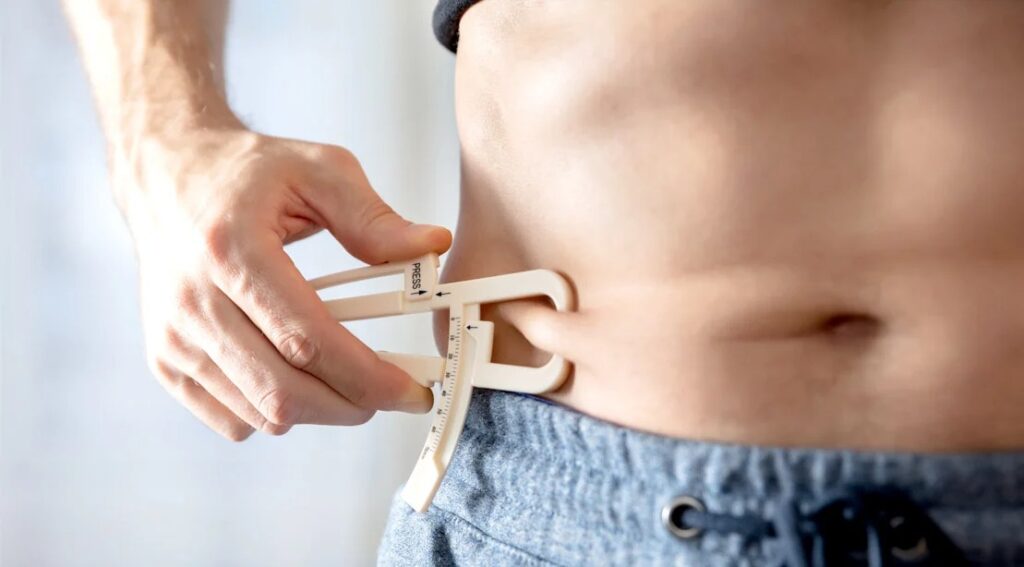Many people rely on cardio exercises as their primary method for losing weight and attaining a leaner physique. While cardio is essential for calorie expenditure, weight training is an often overlooked and highly effective alternative.
Weight lifting, or strength training, engages the body’s muscles against a resistance force, typically in dumbbells, barbells, or machines. Even after your weight-lifting session has ended, your body continues to expend calories as it repairs and builds muscles, making it an effective strategy for long-term fat loss.
Benefits of Weight Training for Fat Loss
You can achieve a leaner and more sculpted physique by incorporating weight training into your fitness regimen. Here are some benefits you can expect from strength training:
- Builds Muscle and Increases Metabolism: Developing lean muscle mass is one of the most significant advantages of weight training. When you perform resistance exercises, your muscles adapt and grow stronger. This muscle growth necessitates additional energy, which raises your Resting Metabolic Rate (RMR).
- Creates a Calorie Deficit to Burn Fat: As your body enters a calorie deficit, it begins tapping into stored fat reserves for energy. Aside from the calories burned during exercise, the post-exercise recovery process also requires energy, resulting in additional calorie expenditure.
- Maintaining Strength While Losing Fat: Weight training can assist you in preserving your muscle mass while shedding excess fat. It stimulates muscle protein synthesis, constructing new muscle tissue. By maintaining muscle tissues, your strength remains intact as well.
- Enhances Physique and Body Composition: Weight training can reshape your body by improving your physique and body composition. As you gradually lose fat and reveal toned muscles, your body becomes more sculpted and defined.

Designing a Fat Loss Program
Depending on your preference and goals, both full-body and upper or lower-body splits are effective for fat loss. Full-body exercises target all of the main muscle groups in a single session. Upper or lower-body split schedules consist of upper-body workouts on one day and lower-body workouts on another. Assigning workout days allows you to train specific muscle groups.
A comprehensive fat loss program must also include compound and isolation exercises. Compound exercises target multiple muscle groups simultaneously, whereas isolation exercises target only one. Aim for higher reps per set to create metabolic stress and elevate heart rate. While heavy weights with lower reps build strength, higher reps contribute to calorie burn and endurance.
Additionally, keeping short rest intervals maintains an elevated heart rate throughout the workout. The sustained cardiovascular engagement enhances calorie burn and improves the overall fat-loss process.
Best Exercises to Include

Whether you are a beginner or a seasoned fitness enthusiast, incorporating the appropriate exercises can significantly impact your path to a leaner and healthier body. Here are some of the most effective workout routines for fat loss:
- Compound Lifts: Squats, the monarch of compound exercises, work the quadriceps, hamstrings, glutes, and core. Deadlifts engage your back, buttocks, hamstrings, and abdomen. The chest, shoulders, and triceps are all targeted by bench press. Overhead press engages your shoulders, triceps, and upper back.
- Isolation Exercises: Unlike compound exercises, which target multiple muscle groups and joints, isolation exercises provide a more targeted approach to muscle development by focusing on a single muscle. Dumbbell flies, lat pulldowns, lateral raises, and bicep curls are isolation exercises that allow you to fine-tune your training to address specific muscle imbalances or goals.
- Bodyweight Exercises: These exercises use your body as resistance, making them accessible to individuals of all fitness levels. Push-ups strengthen the chest, shoulders, and triceps, enhancing upper body strength and muscle definition. Squats are effective for targeting the quadriceps, hamstrings, and buttocks, while mountain climbers raise your heart rate and burn calories.
- Cardio Intervals: High-intensity interval training (HIIT) increases caloric expenditure during and after exercise, making it ideal for shedding extra fat and attaining a lean physique. The intense nature of interval training triggers the afterburn effect, where your body continues to burn calories at an elevated rate even after the workout.
Nutrition for Fat Loss

Protein is the foundation of any effective diet for fat loss. It helps maintain lean muscle mass while the body loses fat. Consuming sufficient protein gives your body the necessary building elements for repairing and regenerating muscles.
Prioritizing foods rich in vitamins, minerals, and antioxidants also contributes to losing weight. Include a variety of colorful fruits, vegetables, whole grains, and healthy fats. These foods nourish your body and promote feelings of fullness, making it simpler to control your calorie consumption.
Carbohydrates are a vital source of energy for exercise. Aim to consume complex carbohydrates, such as whole cereals, rice, and pasta. These foods provide your body with the necessary fuel while preventing excessive carb consumption during periods of lower activity.
To lose weight, you must burn more calories than you consume. However, extreme calorie restriction can be counterproductive and lead to muscle loss and metabolic slowdown. Aim for a modest calorie deficit of around 300-500 calories daily. This approach promotes sustainable fat loss without the loss of muscle mass.
The Fat Burning Results
Body fat reduction is the most anticipated outcome of a well-structured fat loss program. A lower percentage of body fat improves your appearance and contributes to enhanced health indicators and increased confidence. Feeling healthier, leaner, and more in control of your choices fosters a positive attitude that affects many aspects of daily life.
It is essential to note that weight loss results in the loss of both fat and muscle. However, following a fat-burning program with strength training, you can preserve or even build muscle mass. The more muscle you have, the higher your resting metabolic rate and the simpler it will be to keep the weight off.
Your overall health improves as you shed excess fat and increase cardio fitness. Cardiovascular health, insulin sensitivity, and cholesterol levels tend to show positive changes. In addition, your metabolic rate increases due to the retained or gained muscle mass. Having a higher metabolic rate may result in an increased calorie expenditure while at rest.
Conclusion
The integration of weight training and appropriate nutrition is a dynamic pair that unlocks many benefits for long-term fat loss and general health. By incorporating these two elements into your lifestyle, you are not only able to achieve short-term objectives, but you are also fostering long-term fitness. Remember that consistency, commitment, and a balanced approach are the keys to maximizing the effectiveness of this strategy.
Frequently Asked Questions
Will lifting weights make me bulky?
No, weight lifting does not necessarily result in muscle gain. The degree of muscle gain depends on factors like genetics, intensity of training, and nutrition. However, weight training is essential for muscle definition and a lean physique.
Is cardio or weight training better for fat loss?
Cardio and strength training are both essential. Cardiovascular exercise burns calories and enhances cardiovascular health, whereas resistance training preserves muscle mass, increases metabolism, and promotes fat loss.
How long does it take to see fat loss results?
Results vary based on individual metabolism, consistency, and plan commitment. Visible changes may take several weeks to a few months to become evident. For a healthier approach, you should prioritize progress over quick solutions.
Can I achieve fat loss without exercise?
Despite the importance of nutrition, exercise promotes fat loss, preserves muscle, and improves overall health. Combining the two can help achieve optimal and sustainable results.
How Do I Maintain Results After Fat Loss?
Maintaining results requires consistency. Continue exercising regularly, maintaining a healthy diet, and monitoring your progress. Observe portion control in your meals and incorporate healthful choices into your lifestyle.





